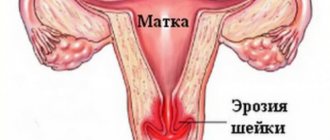Normal discharge in the second trimester of pregnancy should be odorless, colorless and accompanied by itching. What to do when spotting occurs during pregnancy in the second trimester without pain? Is the absence of pain considered the norm, in which there is no need to worry? All the features of diagnosing and identifying red discharge during pregnancy from the 4th month onwards.
When is vaginal discharge normal?
In the first trimester, the development of pregnancy may occasionally be accompanied by hormonal imbalances and pain, which do not cause concern to the gynecologist. However, when, after stabilization of the condition, reddish discharge from the vagina is released again, this always worries a pregnant woman.
Normal discharge in the second trimester is considered to be clean, mucous discharge without green, pink or red impurities. Itching, redness, irritation or an increase in general body temperature are also not normally observed. But when the clinical picture has different symptoms, this is always a reason to consult a leading obstetrician.
Important
Abundant, intense mucous discharge without a characteristic rotten or stagnant odor should also not cause concern in women. The amount of mucus is an individual characteristic of the body; such a manifestation is not an anomaly.
Ectopic pregnancy
When an ectopic pregnancy occurs, the egg is inevitably rejected. One of the important symptoms of this pathology is the above-mentioned discharge. Bleeding as a symptom of ectopic pregnancy occurs at a time when the woman does not even expect an imminent replenishment.
It is believed that pregnancy in the second trimester proceeds without complications associated with bleeding. However, in the last final weeks of the third trimester of pregnancy, there is a possibility of some complications, the symptom of which is most often intense and heavy bleeding from the vagina. As for the described case, immediate consultation with a specialist is needed. The sooner, and most importantly more accurately, the correct diagnosis is established, the higher the chances a woman has of preserving her reproductive system.
Pathological discharge in pregnant women
A woman’s body during pregnancy works as a coherent system for the benefit of the development of the fetus and its life-supporting organs. It is worth understanding that discharge of any nature must be studied and monitored by a doctor. Without qualified help, it is difficult to say whether such a discharge is normal or not.
Important
Only a doctor should determine the type of treatment, its duration and additional therapeutic techniques. Self-medication with folk remedies can only do harm.
Pathological departments in the second trimester include the following color consistency:
- Red with a rich hue. This manifestation is a dangerous condition that threatens miscarriage or placental abruption. In most cases, the risk of losing a child due to untimely assistance is 80%, therefore, the sooner a woman is hospitalized, the greater the likelihood of maintaining the pregnancy and the health of the mother and fetus.
- Pinkish tints are also not normal; they may indicate the presence of diseases associated with the tissues of the reproductive organs, in particular erosion and dysplasia.
- Red-brown discharge is dangerous for the baby. As a rule, such departments indicate the presence of pathologies that can provoke premature birth. Having a baby, for example, in the fifth or sixth month is a risk.
Only a doctor can tell why spotting occurs based on studies and diagnostic measures performed. In most cases, deadly diseases are not always accompanied by severe pain, and therefore even if a woman does not feel pain, but there is discharge of a non-specific nature, this is always a reason to contact the gynecology and pathology department.
Causes of bleeding
Normally, every woman has vaginal discharge, regardless of age. They may be clear or slightly whitish. Their natural physiological consistency and light shade are given by lactobacilli, leukocytes, squamous epithelium and other microorganisms that represent the microbial landscape of the vagina.
Discharge during pregnancy changes somewhat as the period increases. In the first trimester, thickening of cervical mucus is observed. This phenomenon is due to increased production of progesterone. Viscous mucus prevents infection of the fertilized egg. From the second trimester, the discharge begins to change. They become more liquid due to the dominant effects of estrogen. Shortly before the onset of labor, a mucous plug with bloody streaks comes out. Due to the presence of blood, women may mistake them for an abnormality.
Bloody discharge after examination by a gynecologist occurs quite often. This phenomenon does not always indicate a real danger, but it is exciting and requires additional consultation with a gynecologist.
Among the main reasons for the appearance of blood in the discharge are the following circumstances:
- Injury to the vagina and cervix with medical instruments during visual inspection using a mirror. With the onset of pregnancy, the mucous membrane of a woman’s genital tract becomes loose, easily injured and bleeds at the slightest impact. It is not surprising that spotting may occur after examination in a chair using gynecological speculum. A minor injury after examination does not always indicate insufficient qualifications of the gynecologist. This fact is considered as individual hypersensitivity of the intimate zone. Such discharge does not pose a danger and goes away on its own within 24 hours.
- Collecting a smear for microbiological examination. This procedure is carried out as planned 2 times during the entire pregnancy. In case of special indications, the doctor may prescribe an unscheduled collection of material for testing for pathogenic flora: for example, if a sexually transmitted disease or developing inflammation is suspected. The discharge may change color after taking a smear. A small amount of blood on the first day after the procedure is considered normal.
- Gynecological diseases can cause discharge to appear after examination. These include endometriosis, fibroids, and malignant tumors. If such diseases are present, a pregnant woman needs more strict medical supervision. If, after an examination by a gynecologist, bleeding begins and the woman feels a deterioration in her general condition, she is hospitalized in the hospital department. A more thorough examination will determine the cause of the pathology.
- Structural changes in the cervix and cervical canal. These include erosion, dysplasia, and polyps. Erosion is a wound surface that bleeds when exposed to provoking factors. It is easily injured by the instrument during examination of the cervix, as well as when using the two-handed method. Polyps present in the cervical canal can also be injured during a gynecological examination. This does not pose a particular danger to the body, but increases the risk of infection by pathogenic flora.
- Ectopic pregnancy is a common cause of bleeding. A woman may not even be aware of its presence. The appearance of severe abdominal pain is a real cause for concern. A ruptured fallopian tube is a direct threat to life. In this case, time goes by minutes.
- Placenta previa is a physiological feature that requires special attention. In the presence of such a pathology, the doctor resorts to a visual examination of the vagina and cervix as little as possible, since profuse bloody discharge can occur at any time. Placental abruption, in which spotting may occur at first, subsequently threatens bleeding. The threat of miscarriage is the most dangerous symptom observed with placental insufficiency.
Red discharge in the second trimester of pregnancy: possible diagnoses
Since any separation in the second trimester of pregnancy is a danger and a consequence of a disease that threatens the life of the fetus, it is worth understanding what diseases may be at the root of the pathological condition.
In first place in terms of danger and speed of development of symptoms is abruption of the placenta or child's place. The child not only receives all the useful elements through such an organ, but is also protected from external factors. If placental abruption occurs (separation from the walls of the uterus), then the baby will not be able to survive and an arbitrary miscarriage occurs.
Important
Diagnosis of placental abruption is made using ultrasound control; at the time of control, the woman is in the pregnancy pathology department.
It is also worth considering such diseases that provoke bleeding in 4-7 months of pregnancy:
- sexual infections;
- cervical injuries;
- hormonal imbalances;
- physiological abnormalities of organ development;
- placenta previa;
- insufficient oxygen supply;
- uterine fibroids;
- tumor formations (oncology);
- congenital diseases of internal organs.
Brown discharge during pregnancy - dangerous or not?
Before you panic, you need to become more familiar with the reasons that can lead to this phenomenon. Brown discharge during pregnancy quite often indicates that various abnormalities or pathologies of pregnancy are occurring. But at the same time, such a phenomenon is not considered an alarming sign, since in some cases they are normal, therefore, they are completely safe and do not pose a risk to the health of not only the expectant mother, but also the baby.
But at the same time, this does not mean that if brown spotting appears on underwear, a pregnant woman should not be concerned. The fact is that a lot here will directly depend on both the duration of pregnancy and the presence of accompanying symptoms.
If such discharge appears, it is imperative to seek help from a doctor in order to get rid of unnecessary worries and make sure that this discharge is completely safe. After all, a pregnant woman will not be able to make the correct diagnosis on her own, and the risk still remains.
Today, there are quite a large number of different reasons that can provoke the appearance of brown discharge during pregnancy. A certain part of them is directly related to the duration of pregnancy. Every girl planning to become a mother soon should become more familiar with the main reasons that can provoke this phenomenon.
Helpful preventive measures
Prevention of bleeding in the late stages of gestation can be successfully used, but its effectiveness depends on many factors, in particular, on the state of health of the woman herself, on the genetic characteristics of the fetus, nutrition and physical activity during pregnancy.
To prevent complications during the second trimester of pregnancy, it is worth considering:
- food with the required amount of vitamin D, B and C;
- consumption of sufficient quantities of meat, dairy and fish products;
- moderate physical activity, as recommended by your doctor;
- constant walks in the fresh air;
- absence of stressful situations;
- work no more than 8 hours a day with lunch breaks of at least an hour;
- consumption of clean water in the amount agreed with the doctor.
The best prevention of pregnancy complications in later stages is a good mood, love from family and proper nutrition. The baby is growing quickly, and therefore all 9 months will pass quickly and without difficulties.
Treatment methods
After confirming the diagnosis of “non-developing pregnancy,” the doctor decides how to treat. Tactics are selected individually, the doctor takes into account the nature of the pregnancy, the presence of concomitant diseases and the duration of pregnancy. In medicine, several methods are used to terminate a frozen pregnancy.
Medical abortion is performed using medications. The doctor prescribes progesterone antagonists (Mifepristone or Mifegin) to the woman. After a few hours, the woman experiences contractions, and the uterus gets rid of the dead fetus. After a medical abortion, a woman is recommended to undergo an ultrasound examination to ensure that there is no fertilized egg left in the uterus. To avoid intoxication of the body, doctors also prescribe antibiotics.
Frozen fruit can be removed by cleaning (scraping). The operation is performed in a hospital setting under local anesthesia. After cleaning, the patient is prescribed a hormone to contract the uterus (“Oxytocin”) and antibiotics. The material obtained as a result of cleaning is sent to the laboratory for further research. This is done to ensure that the subsequent pregnancy goes well.
Curettage of the uterus up to 12 weeks (click to view)
A minimally invasive procedure is vacuum aspiration. The uterine cavity is cleared of the frozen fetus using vacuum suction. A mini-abortion is performed in the early stages (up to 7 obstetric weeks). After vacuum aspiration, brown discharge appears. This is the norm. During the rehabilitation period, physical and emotional stress should be excluded, as this can cause complications.
If a woman has no symptoms of intoxication during ST, namely: weakness, nausea, headache, high temperature, then the doctor resorts to a wait-and-see approach. No active actions are taken, that is, doctors expect spontaneous miscarriage.
First month
At the very beginning of pregnancy, small discharge may cause the fertilized egg to implant into the wall of the uterus .
As a rule, this happens 10 - 14 days after conception, and approximately coincides with the date of the next menstruation, so a woman may perceive this discharge as the beginning of the monthly cycle and not attach much significance to it.
They are more limited in nature and may be accompanied by stabbing pain in the lower abdomen. So, a woman finds out that she is pregnant.
Clots
Heavy bleeding with clots indicates an incipient miscarriage, detachment of the ovum, or ectopic pregnancy.
When the fertilized egg is detached, small brown clots may come out once. This can occur if there is a hematoma between the egg and the walls of the uterus. In this case, the discharge is not accompanied by pain and is brown or brown in color.
If clots are accompanied by heavy bleeding and nagging pain, unfortunately, this is a symptom of a miscarriage or ectopic pregnancy. In this situation, it is necessary to urgently call an ambulance.









